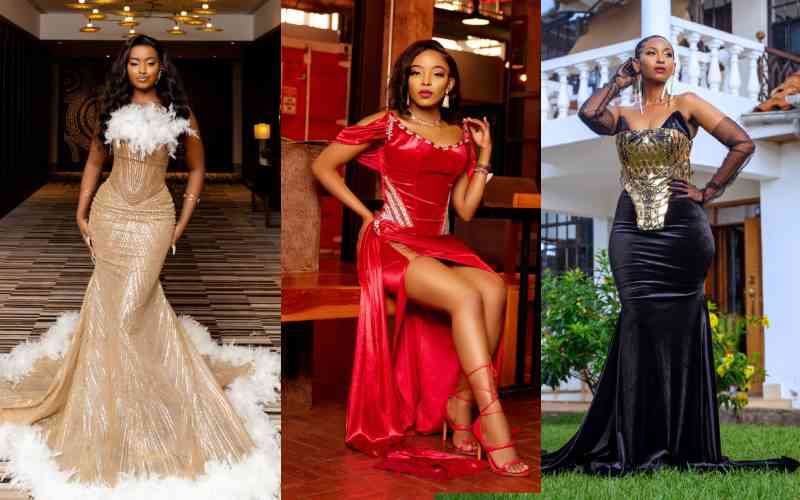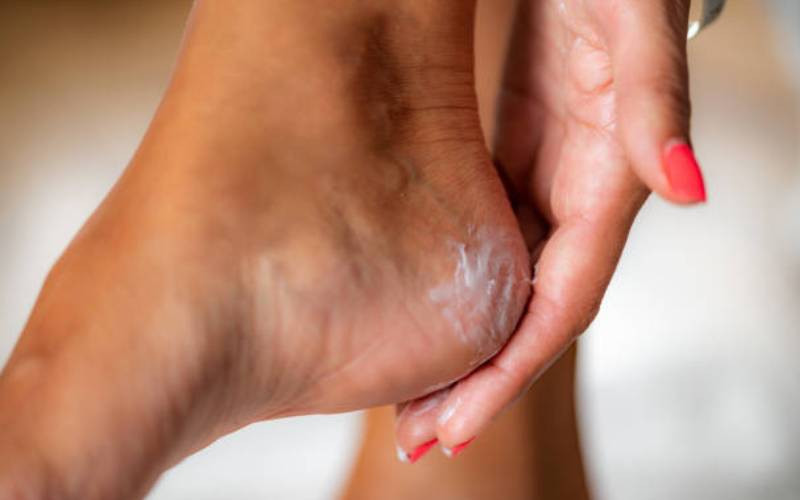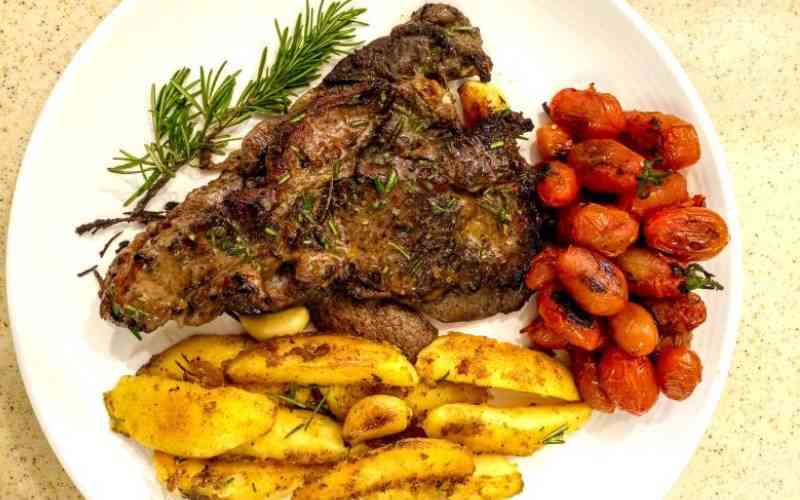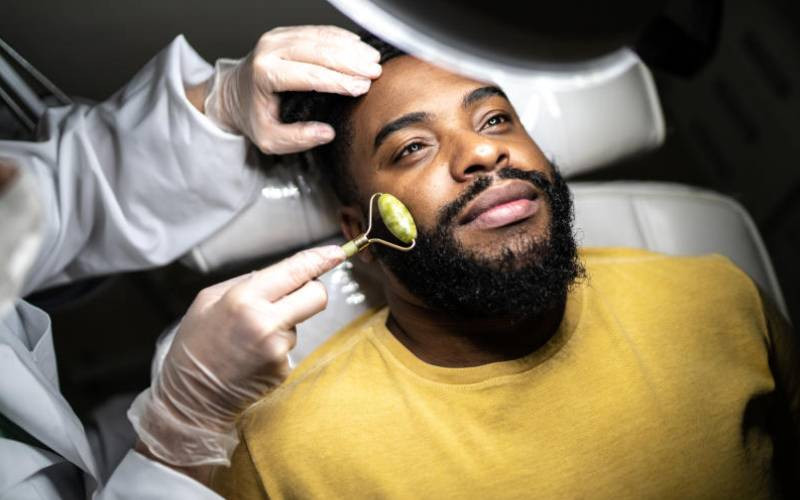
A trendy urban woman in Kenya spends thousands of shillings on her style; from head to toe. From the neatly done braids or a pricey human hair wig to her possibly thrifted outfit and pedicured toes, she has to dig deep into her pockets.
“A woman can spend Sh50,000 on hair and nails a month. Times have changed. Women who come to the salon not only ask to make their hair. They also want their make-up done, a manicure, a pedicure or removal of unnecessary hair,” celebrity stylist Jane Okoth told a local publication in 2018.
Women’s beauty trends in Kenya are increasingly mirroring those reflected in popular culture through international celebrities.
The beauty and self-care industry has been reported to be worth an estimated Sh58 billion by marketing research company, Euromonitor.
Self-care goes hand in glove with clothing and fashion. The right make-up, hairstyle and jewellery will complement the perfect red-carpet event for a star.
It can also ruin the entire look and have the celebrity thrown into a ‘worst dressed’ list. The same goes for ordinary women looking to express themselves through their personal style and fashion; the make-up, hair and accessories they use can make or break their look.
When it comes to fashion, however, what is happening locally is a far cry from the glitz and glamour associated with the industry.
The fashion business is typically linked with millionaire supermodels, the ultra-successful billionaire designers behind the outfits they wear down the runway and the famous, filthy rich celebrities who buy clothes while they are hot and new.
The models, designers and event organisers involved in the scene, while talented and ambitious are payed and famed much less than their counterparts who have already made it internationally.
Rich Oloo, a young professional model from Nairobi, and Mr University Kenya 2019 says local models need an umbrella body to protect their rights and interests.
“When it comes to negotiating for pay, a few factors are considered. Your modeling agency (if applicable), the client, scope and duration of work.
“Pay range begins at Sh10,000 per show on the low end, but rises with experience and good negotiation,” says Oloo.
Oloo says the government setting up fashion schools, where people can be trained in design and modelling would cultivate a culture of professionalism in the industry.
“As models in the Kenyan market, we need international exposure, even if such functions are held here at home. Few models get to interact with renowned fashion gurus apart from on social media. Such experts should be brought in to advise us, for example holding of fashion seminar of sorts, even if held virtually- now that we have seen it is possible.”

Pay and support aren’t the only thing the young professionals in the local fashion scene are lacking.
Leakey Odera, founder of Pambazuka Entertainment, a commercial fashion and modeling agency that is credited for holding most international beauty pageants franchises in the country, says that up and coming models are often preyed upon.
“The modeling field locally is quite turbulent. A few years ago, there were only four agencies in the market. Now, there are many - most just briefcase agencies looking to defraud young aspiring models who are desperate and who can be manipulated in an industry that has no structures. When people come into contact with crooks who ask for a fee to sign them up and then disappear, this discredits the industry and nearly everyone who operates in it,” says Odera.
The events organiser suggests that the solution for this is proper structure.
“This industry needs structure in the form of a regulatory body. Currently, there are no systems in place. Designers coming together to create a council two years ago was the first step in a good direction. Further, industry players need to engage the government into putting in place policies that establish and protect the industry to thrive as a respected structured sector.
Odera says the government needs to come in and support pageants, adding that he was lucky enough to receive support back in 2019, when he and Miss Universe Kenya 2019 Stacey Michuki were welcomed to State House along other winners, congratulated for their success and given pocket money and fully paid for tickets to Canada for the pursuit of further competition.
“With a lack of governing (rules), you might find one event paying models say Sh1,000 to host and another paying them Sh5,000. A commercial model may earn between Sh150,000 to Sh200,000 for a television advertisement. And this sector being unregulated, many models just starting out and eager to get their first bookings will offer their services either very cheaply or for free,” Odera said on model earnings.
Ann McCreath, founder of internationally recognised design brand, KikoRomeo and board member of the Kenya Fashion Council says one of the major challenges the textile, and in particular the fashion industry, faces is an operating environment that stunts growth.
“We have elections every five years and because of a bad political environment that disrupts business and the entire economy in the country, all the gains made always get lost. Designers have to make the best of the few good years, and this is very difficult for new ones who are struggling to make ends meet and not able to rely fully on the craft,” says McCreath.
According to McCreath, designers are also heavily burdened when it comes to raising capital for their businesses and don’t have assured access to sustainable financing.
“Designers, even the promising and structured ones, then end up having to do small-scale production because they don’t have enough money to buy fabric in large amounts, says McCreath.
Adequate capital would allow them to make clothes in bulk and keep local designs afloat, which is cheaper and good for the textile and fashion world.
She adds: “There is a lot of unharnessed talent in Kenya. Designers here are creative and have brilliant, unique ideas, however, with limited means of expressing their concepts and skills,’ stresses McCreath.
Silver lining
Odera is, however, hopeful because there are many designers who are now able to make a living solely out of their craft.
“Between June1-15 Seoul Fashion Week and Korean Fashion week was attended by 15 Kenyan designers,” says Odera.
Jeffery Wilson, a designer who hosts an annual show, dubbed The JW Show, which allows various local designers to showcase their work, says a major setback for the designers is lack of coverage by media.
“As an industry we need visibility, which the media has potential to give us. It will spread word to Kenyans that fashion is accessible, constantly growing and evolving,” says Wilson.
Wilson says that the government can aid by reducing taxation costs for purchasing materials used in the craft.
“It would be great for us if there was more participation by the government. It is very difficult to access or partner with the government.
“At the moment, I believe that I am the first designer who is sponsored by the government, an achievement I know I am privileged to have,” says Wilson.
 The Standard Group Plc is a multi-media organization with investments in media platforms spanning newspaper print
operations, television, radio broadcasting, digital and online services. The Standard Group is recognized as a
leading multi-media house in Kenya with a key influence in matters of national and international interest.
The Standard Group Plc is a multi-media organization with investments in media platforms spanning newspaper print
operations, television, radio broadcasting, digital and online services. The Standard Group is recognized as a
leading multi-media house in Kenya with a key influence in matters of national and international interest.










